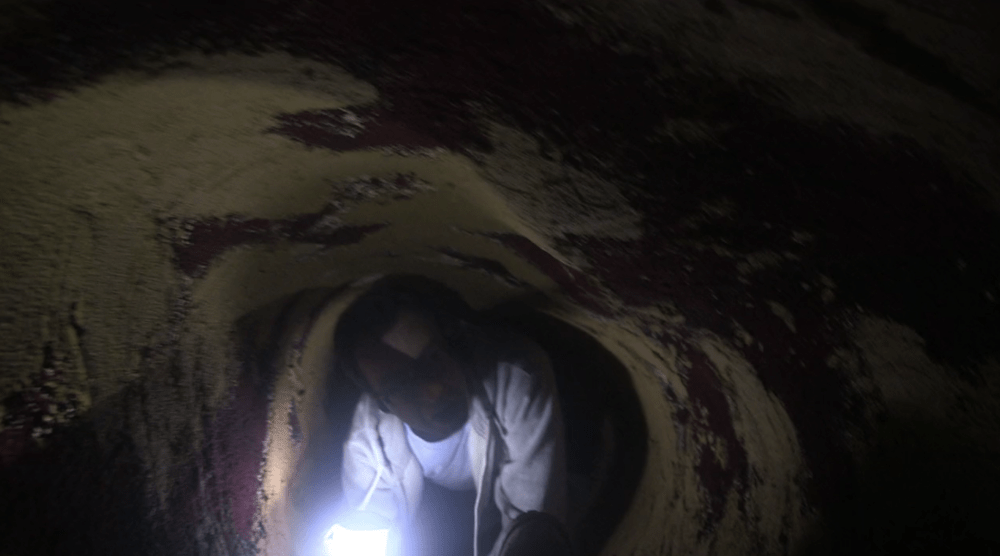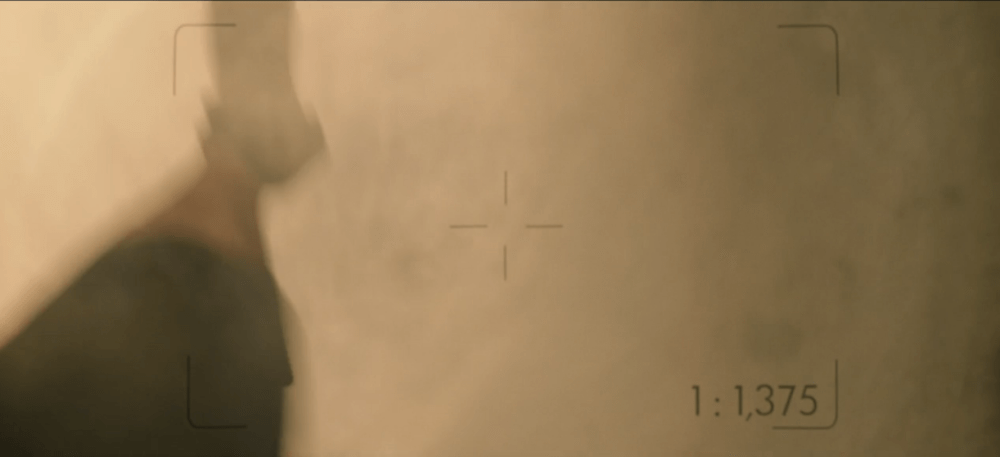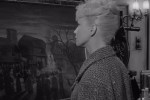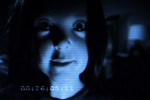Dawn Keetley
Director of Get Out (2017) and Us (2019), Jordan Peele is best known for films that are relatively unambiguously horror. His third film, Nope (2022), though, appears to take a turn away from horror. Indeed, in numerous interviews before and after the release of Nope (2022), Peele described his primary influences as science fiction and western fare – Close Encounters of the Third Kind (Steven Spielberg, 1977), ET (Spielberg, 1982), Jurassic Park (Spielberg, 1993), and Buck and the Preacher (Sidney Poitier, 1972) (see, for instance, Murphy and Ryan). Horror still lurks, however, in his mention of Jaws (Spielberg, 1975) as influence (and in his top four horror movies of all time!). What I want to argue here is that Nope has a quite striking resemblance to a relatively obscure found-footage horror film (relative, that is, to the many Spielberg films that make their presence so strongly felt in Nope). This resonance draws the found-footage mode into Nope, which co-exists with the hyper-evident presence of big-budget Hollywood cinema. As many critics, and Peele himself, have noted, Nope has a lot to say about the spectacle of cinema: indeed, Peele has cited the influence of The Wizard of Oz (Victor Fleming, 1939), not least for “its commitment to spectacle” (Ryan). But the presence of the found-footage mode suggests that Nope has something to say about spectacle in and through other cinematic modes as well.
Nope bears some uncanny resemblances, I argue, to a British found-footage horror film from almost a decade earlier called The Borderlands (2013), released in the US as Final Prayer, and directed by Elliot Goldner. I am not claiming that Peele knew anything about this film: he is self-conscious, intentional, and vocal about his influences – and he hasn’t mentioned it. And I’m not sure anyone who hadn’t watched these two films in close proximity would notice their similar preoccupations. But I just happened to re-watch The Borderlands immediately after watching Nope, and I was very much struck by the parallels – and by the similar larger projects in which both were engaged.
To draw out the uncanny resemblances between The Borderlands and Nope is to trace a found-footage plot running through the richness of Nope’s narrative. In both films, a small group of characters seek to document mysterious and possibly miraculous occurrences, and so they arm themselves with a panoply of cameras and sound recording devices that they set up on location.
In The Borderlands, tech expert Gray (Robin Hill) and Father Deacon (Gordon Kennedy) arrive at a small English village where the local priest has alerted the Vatican to what he believes are miraculous happenings at the church. In Nope, the owners of a California horse ranch, OJ (Daniel Kaluuya) and Emerald Haywood (Keke Palmer) slowly become convinced that they’ve witnessed a UFO. They find their own tech expert, Angel Torres (Brandon Perea) and, eventually, famed cinematographer Antlers Holst (Michael Wincott) to help them document what they’ve witnessed. Both films give us extensive (and intrusive) scenes of cameras and audio equipment being set up to record these apparently unearthly events.
The effort to capture these events on film – what is explicitly described in The Borderlands as the mandate to “document” – is driven by the apparently miraculous. “Miracles” feature explicitly in both films, and there is debate over their meaning. In The Borderlands, Gray and Deacon are at the village church precisely in order to assess the local priest’s claims that he has witnessed miracles; when they prove skeptical, the priest challenges them: “You don’t believe in my miracle do you? If this is not a miracle . . .” – and he trails off, unable to articulate what may be happening if it is not a miracle. In Nope, similarly, OJ and Emerald (like the priest in The Borderlands) believe they have experienced a miracle – and they must persuade others (Angel and Antlers) to document it. In Nope, the first sign of the alien entity involves the death of OJ and Emerald’s father, killed by a coin that falls from the sky. In the aftermath of this traumatic event, which OJ witnesses, he asks his sister, “Is there such a thing as a bad miracle?” There is – and characters in both films will confront what may well be a miracle but which is undoubtedly a “bad miracle.” Crucially, though, in both films, the “miraculous” must be both seen and documented.
The persistent signs of the ‘miraculous’ – of the presence of some ‘alien’ entity – are similar in both films: the power flickers and goes out, and cameras glitch as the otherwordly makes itself known. In both films, characters hear spectral and inexplicable voices: in The Borderlands, children’s cries echo from some unknown space in the church; in Nope, shrieks emanate from the sky.
The principal point of uncanny resemblance, however, concerns twinned culminating scenes in which characters carrying cameras and intent on documenting the miraculous are consumed alive in this pursuit, still filming as they are ingested. Although the connection hasn’t been explored in detail, some viewers of Nope have remarked on the similarity in comment threads and on Reddit.
Someone called J. Jett writes in the comments after an article on Nope on Bloody Disgusting’s website:
i can’t remember the name of the found footage(?) type of film but it has a scene where the 2 documentary(?) footage guys end up in this giant creature that they should was just a basement and they are being digested alive. it’s pretty horrifying. (Squires)
Grr-_-argh responds:
i love that scene—it’s from the borderlands/final prayer–and it really catches you off guard because almost nothing else in the movie indicates that it’s coming. (Squires)
The parallel between Nope and The Borderlands’ ending scene also came up on a Reddit thread, where jimnast30 writes:
Did the digestive tract moment, which was well and truly horrific, remind anyone else of the end of The Borderlands? I wondered if Jordan Peele saw it and thought, “Oh, that’s awesomely awful. I gotta use that.”
And someone else (FoundFootageDumbFun) replies, “I flashed on the end of The Borderlands immediately hahaha.”
These parallel scenes in Nope and The Borderlands rely for their horror on the seemingly inorganic turning out to be organic. The UFO in Nope draws people up and, it turns out, consumes them in its immense digestive tract. OJ realizes about halfway through the film that the ‘spaceship’ is not a machine at all, that it’s eating people: “It’s alive. It’s an animal.” This exact same realization hits the two protagonists of The Borderlands in the vastly more horrific scene at the end of the film: Gray and Deacon are pursuing their two colleagues, Father Calvino and Father Mark Amidon, down into the tunnel beneath the church after mayhem breaks out when they try to perform a rite to banish the seemingly nonhuman ‘creature’ that inhabits the church. As Gray and Deacon go further into the tunnels, the walls turn from rock to organic matter; they become wet, and Gray and Deacon realize in horror that they are moving. The two men die as the digestive tract of whatever they are in – we never see it whole – dissolves and ingests them.
These scenes – scenes of digestion by alien beings – are drawn still closer together in that they both employ the found-footage mode. Characters are filming their own consumption. The UFO is mostly filmed in Nope via the classic narrative omniscient camera: the alien being is fully captured on film – or, its exterior is. The exterior of the ‘alien’ in The Borderlands, arguably the church itself, is similarly captured on film in its entirety, albeit in the found-footage mode, by the go-pro cameras worn by the protagonists. There is a scene toward the end of the film, when the characters discuss the entirety of the site on which the church stands, having discovered that it was once a site of pagan worship. The aerial shot (in a photograph) approximates, on the ground, how a UFO might look in the air – visually drawing together the ‘ancient’ and the pagan and the alien (as has been done many times, most notably in Roy Ward Baker’s brilliant 1967 film, Quatermass and the Pit).
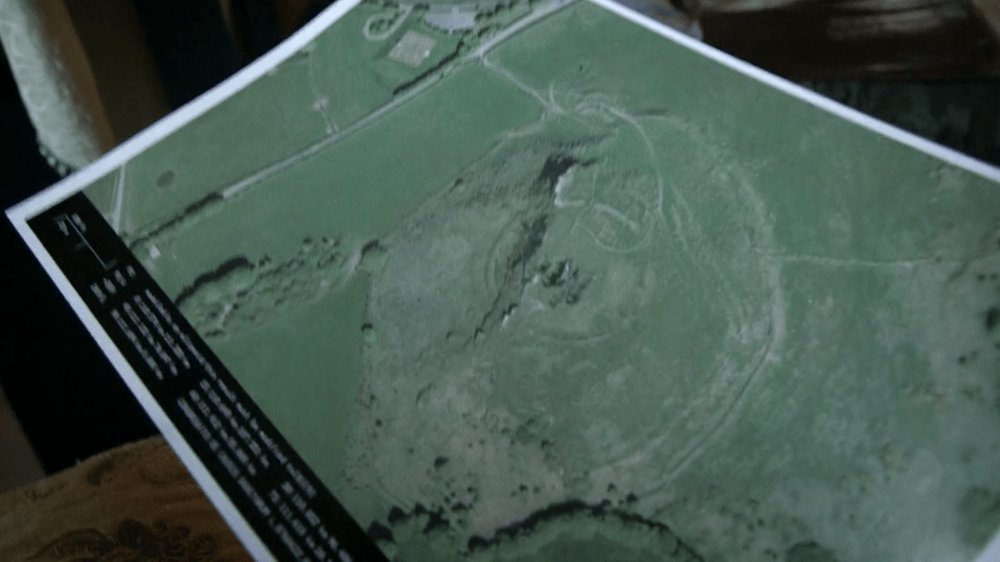
Fig. 4 – The aerial shot of the pagan site surrounding the church in The Borderlands, looking something like Nope’s alien
Crucially, though, both films also film the interior of the alien entities by means of subjective cameras as those who carry them are being digested; as a result, the glimpses we get are fragmented, partial, confusing. Gray and Deacon are driven by the desire to document the miraculous, but also to save their colleagues, as they go deeper into the bowels of the church. In Nope, Antlers Holst, who is known for being able to get the shots no one else can (exactly why OJ and Emerald hire him), actually tries to be drawn up into the alien for the express purpose of getting the “impossible” shot of its interior. And he does get this shot, filming as he is ingested and consumed. Because the alien entity does not eat the inorganic, the alien will spit out Antlers’ camera: his camera survives, his “impossible” shot presumably preserved, while he is not. In both films, characters are literally consumed, then, in and by the drive to document, to capture on film that which by its very nature would seem to elude such capture.
If the principal characteristic of the found footage horror film is that the camera is an integral part of the diegesis, its presence in Nope suggests that ‘found footage’ is less a (sub)genre and more a mode that increasingly infuses all film. Many critics have pointed out that Nope is about the role of ‘spectacle’ in our lives (See Parham and Parker) – the seemingly omnipresent human desire to capture and create ‘spectacle’ through the many cameras in our lives. These cameras inevitably create a distance between ourselves and the thing we are filming; hence ‘spectacle’ comes hand in hand with a certain dehumanization. Indeed, Nope’s centering of spectacle exemplifies Susan Sontag’s famous dictum about science fiction in general: “Science fiction films are one of the purest forms of spectacle” (43). Sontag continues to elaborate the “depersonalisation” that comes along with the spectacle at the heart of science fiction. The “aliens” are “non-human,” she writes, and they seek to “impose on the Earth if they are successful” a “regime of emotionlessness, of impersonality, of regimentation” (45). Science fiction thus centrally concerns “dehumanisation” and “depersonalisation” – “man’s ability to be turned into a machine” (46) at the same time that it features “spectacle.” Nope’s intervention in this dynamic is to attribute the “depersonalization” at the heart of hits science-fiction project less to its alien creature than to its human characters, specifically in their dedication to capturing everything on camera. The film does this in large part precisely through interweaving the found-footage mode.
In found footage films, the diegetic camera often serves to reinforce depersonalization. When Josh takes the camera from Heather in The Blair Witch Project (1999), for instance, and looks through it, he tells her he understands why she likes her video camera so much, why she needs to keep filming as they become more lost, more terrified. “It’s not quite reality,” he says, “It’s totally like a filtered reality.” Critics Steen Christiansen and Shane Denson have each identified, respectively, the “uncanny cameras” and “crazy cameras” of found footage horror – objective cameras which, as Christiansen puts it (describing Denson’s argument) break “bodily correlation” with the use of cameras that “can occupy embodied positions which the human body cannot” (45). This kind of camera involves “the move away from a correlation between the cinematic body and the viewer’s body” (44). And it is this move – the move of the camera away from the body – that creates ever greater potential for “spectacle” for its own sake, divested of humanity at the same time as it is divested of the body, of the human.
Both The Borderlands and Nope, in their famous scenes of aspiring documentarians and their cameras getting swallowed and consumed, reverse the allure of spectacle, of impersonal distance, and of depersonalization (those traits Sontag identified at the heart of science fiction). Instead of “uncanny” cameras, detached from the body and its inherent limits, both films offer us instead “embodied cameras” – cameras that are sutured to the body with all its attendant vulnerability – and that fail to capture any kind of clear picture of the ‘spectacle’ that is sought. The characters go with their cameras – and die with their cameras, thus offering an object lesson in how the fate of humanity might well depend on how we use cameras. The pursuit of spectacle – of the “impossible shot” does – and should – come with very real consequences, consequences we need to recognize. Nope’s weaving of this particular form of found-footage mode – the embodied camera – is one way in which it conveys this, its overarching message: human fates are inextricably bound to the ways we wield the camera.
Works Cited
Christiansen, Steen. “Uncanny Cameras and Network Subjects.” Digital Horror: Haunted Technologies, Network Panic and the Found Footage Phenomenon, edited by Xavier Aldana Reyes and Linnie Blake, I.B. Tauris, 2015, pp. 42-53.
Denson, Shane. Discorrelated Images. Duke University Press, 2020.
Murphy, Mekado. “Jordan Peele Says There May Be More ‘Nope’ Stories to Come.” The New York Times, 29 Aug. 2022.
Parham, Jason. “Nope Rightly Challenges Our Love of Spectacle.” Wired, 26 July 2022.
Parker, George. “Jordan Peele’s Nope, Spectacle, and Surveillance.” Horror Homeroom, 6 Nov. 2022.
Ryan, Mike. “Jordan Peele on the Secrets of ‘Nope’ and His Love for ‘Tremors.’” UPROXX, 18 July 2022.
Squires, John. “Jordan Peele’s ‘Nope’ Now Available to Watch at Home.” Bloody Disgusting, 26 Aug. 2022.
Sontag, Susan. “The Imagination of Disaster.” 1994. Liquid Metal: The Science Fiction Film Reader, edited by Sean Redmond, Wallflower Press, 2007, pp. 40-47.

